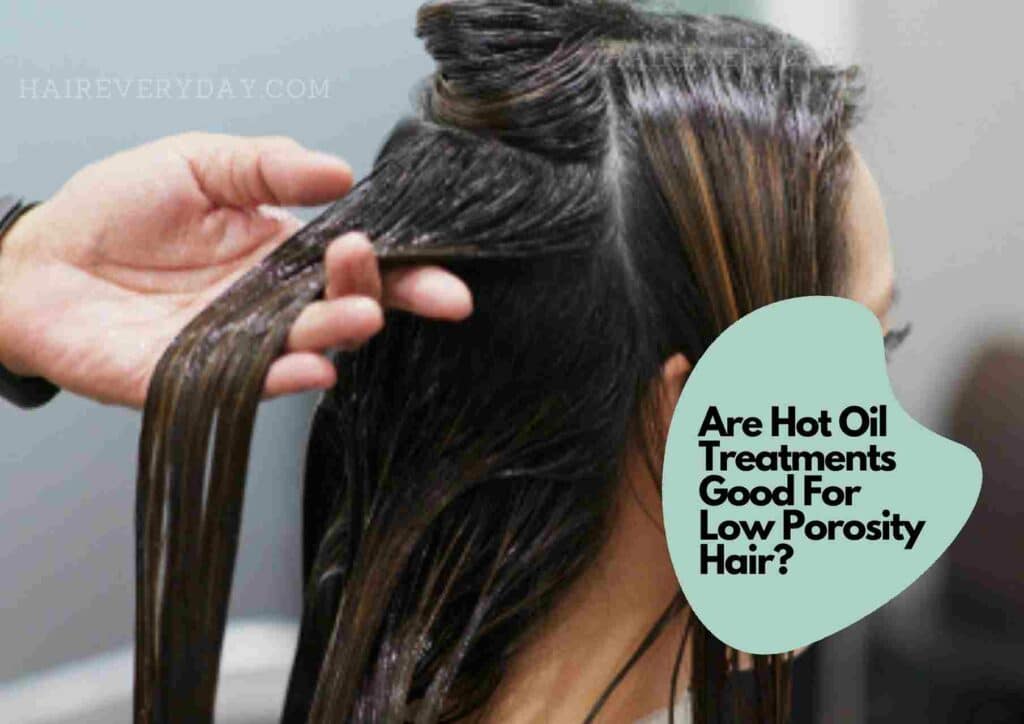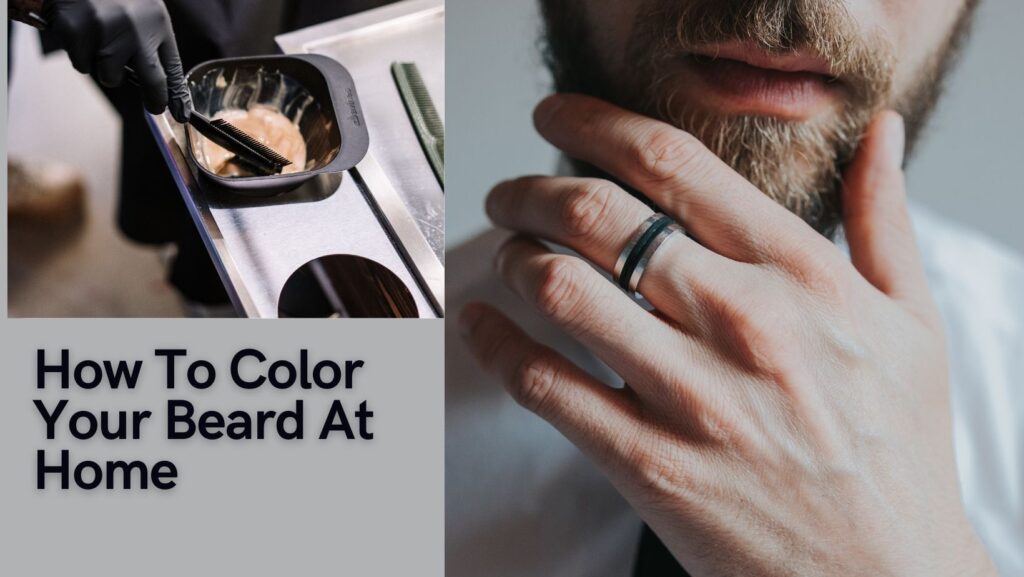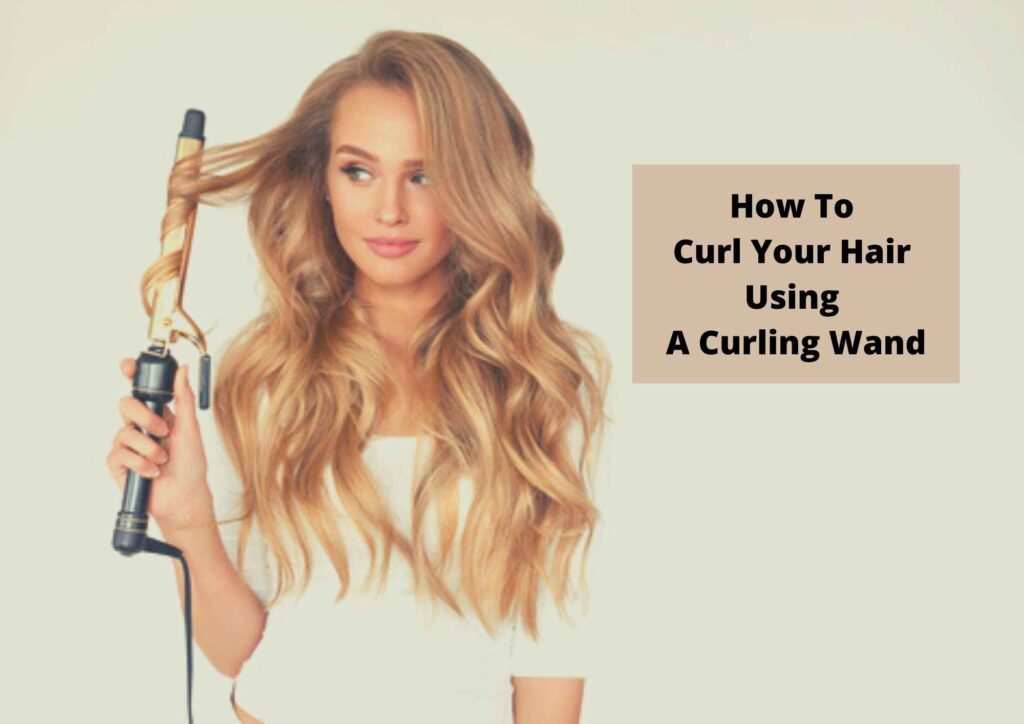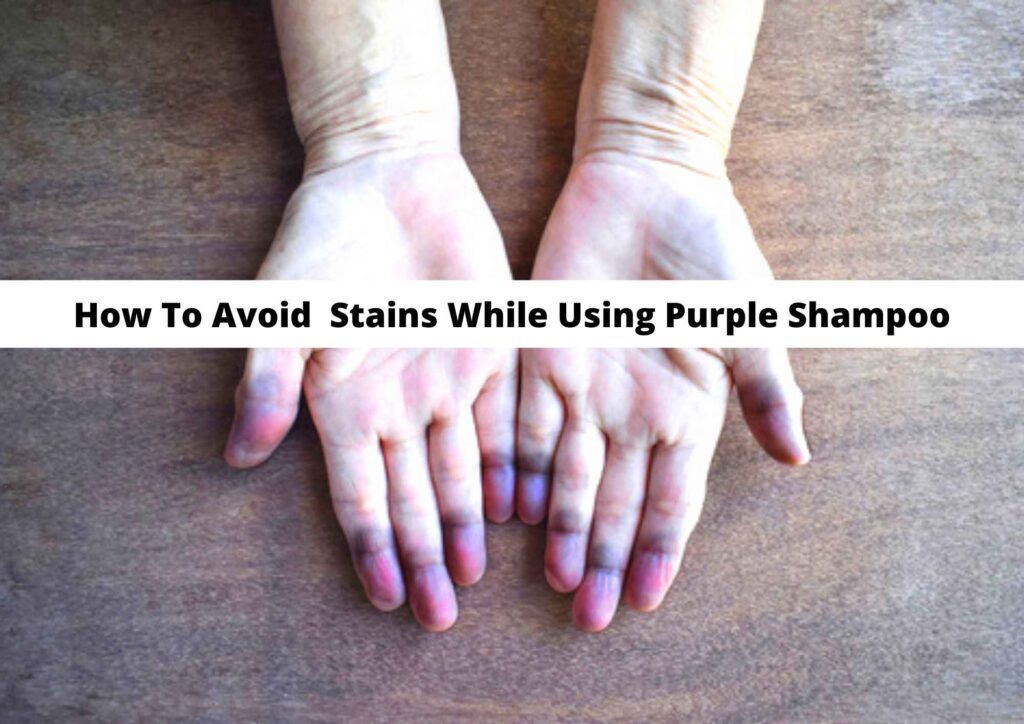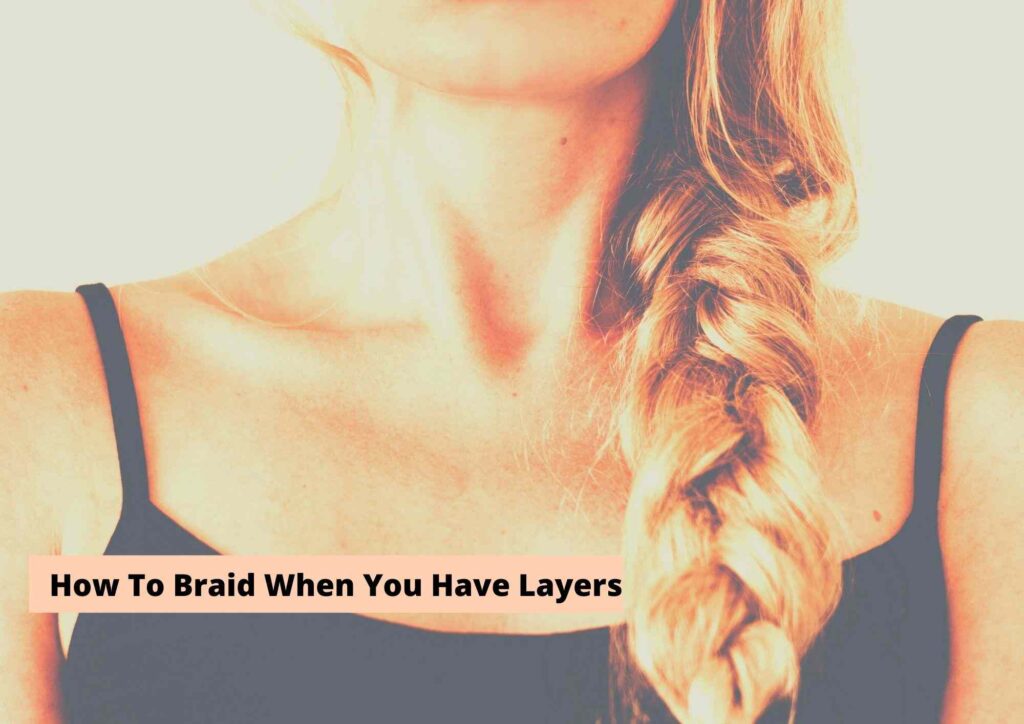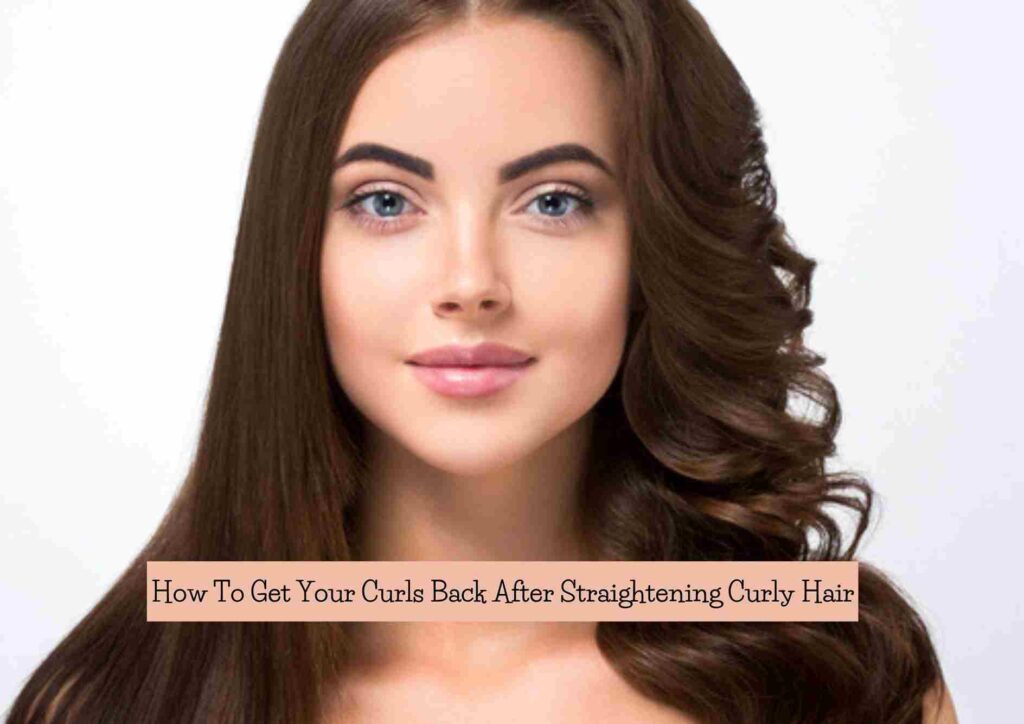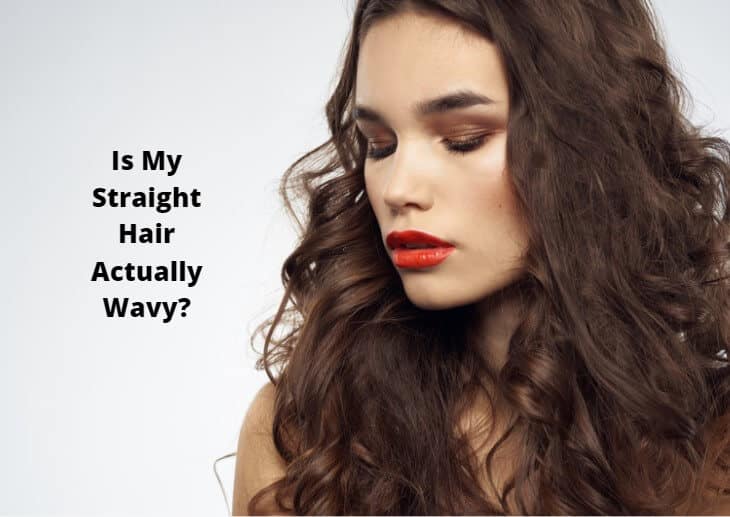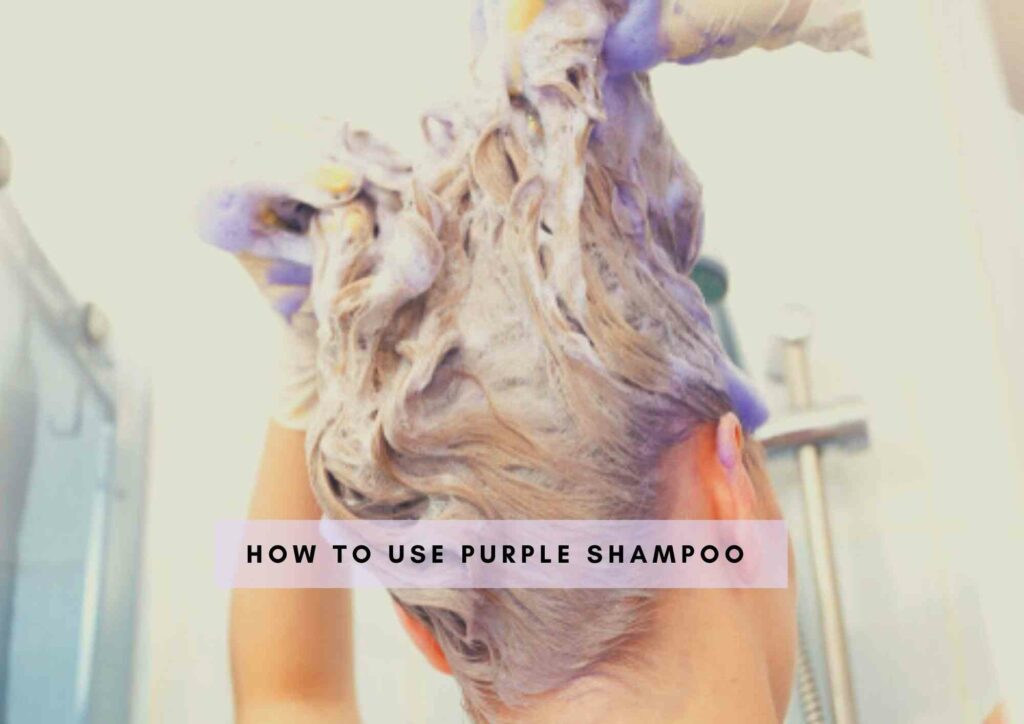Are hot oil treatments good for low porosity hair? Check out in my article below how to do oil treatments for low porosity and what oils suit this hair type.
Using oil on your hair has been a tradition in many cultures and it’s for good reason too. Certain oils can help add moisture to your hair while most prevent moisture from escaping and keep hair soft.
And of course, oils are a natural alternative to gels, creams and serums. So using oil can help control flyaways and frizz too.
But what is a hot oil treatment? Well, it’s just the process of slightly warming up your oils before applying them on your hair. The heat helps the oil absorb into your hair strands better.
- Related: Best Oils For Low Porosity Hair
- Related: Is Rice Water Good For Low Porosity Hair
- Related: Best Co Wash Products For Low Porosity Hair
Low porosity hair is very hard to moisturize as the cuticles on this hair type are laid close together and tightly packed so it won’t let any water, conditioner, serum or oil into the strands.
So it’s assumed that using hot oil can help low porosity hair open up and speed up the absorption process? But is this true? Let’s find out!
What Is Low Porosity Hair And How Do I Know?
Okay, so before we get into the nitty gritty of using hot oil treatments for low porosity hair, I think I need to explain to you what low porosity means.
For this you first need to understand that the hair structure is made of 3 layers – outer cuticle, medulla, and cortex. The outer layer that has the cuticles, the middle layer called cortex and the inner layer called medulla.
Low porosity occurs when the cuticles on the outer layer that are usually overlapping slightly are packed together in a very tight formation. This prevents moisture from entering or escaping the hair strands.
If you want to check whether or not you have low porosity hair, you can do the strand test. This involves:
- Washing your hair with a mild shampoo without heavy ingredients or silicones
- Letting it air dry completely without toweling it or using it.
- Plucking one strand from your head to put it in a glass of water
- If the strand floats that means you have low porosity hair as the water molecules don’t enter the strand
- If the strand sinks you likely have high porosity
- However, if your hair floats for a bit and then sinks it means you have normal amount of hair porosity.
Are Hot Oil Treatments Good For Low Porosity Hair
Yes, hot oil treatments are good for low porosity hair. Actually, hot oil treatments might be one of the only ways to reduce dryness and add moisturization to this hair type.
The cuticles on the low porosity hair types are not open at all while normal hair cuticles open slightly to allow moisture exchange. Low porosity hair have cuticles that are tightly packed together and are laid one atop the other, making any sort of opening in the hair strands impossible.
So hot oil treatments have the double benefit of adding moisture and nutrients to your hair and supplying some heat that can open the cuticles allowing penetration of these oils.
What Kind of Oils Suit Low Porosity Hair
Oils for low porosity hair need to be just one thing – lightweight! Only oils that are light on hair and not too viscous can stay on hair long enough to be absorbed by hair strands.
If you have oils that are too heavy (like castor or sweet almond oil) then they can stay atop of hair strands without getting absorbed in for a long time. While on your hair they make hair look very greasy and get washed off without giving your tresses any benefit.
However, a lighter oil (like grapeseed oil or argan oil) that stays atop your hair and slowly permeates the strands and moisturizes it.
For this reason, you should not just avoid oils that are too rich and heavy but also other hair products. You shouldn’t, for example, use cocoa butter or shea butter on your low porosity hair as they will form a dense layer and not get absorbed easily.
In the same vein, avoid hair creams, leave-in conditioners, etc. that contain these ingredients or other ingredients like silicones that can form a coat of buildup on hair, worsening the low porosity of your strands.
Is Coconut Oil Good For Low Porosity Hair
There is some debate whether coconut oil benefits low porosity hair or not. Some hair experts argue that coconut oil contains a lot of vitamin E and unsaturated fatty acids that can be beneficial for low porosity hair while others say it’s too heavy to suit this hair type.
There is truth in both these arguments. So ultimately whether you should use coconut oil or not depends on HOW porous your hair is.
If your hair has mid to low porosity then coconut oil can actually benefit your hair. However, if you have very low hair porosity then coconut oil might stay atop your hair and not penetrate the strands.
If you’re planning to use coconut oil for low porosity hair you can also use a thermal hair cap that will add heat to your hair, opening hair cuticles and allowing the oil to go inside your strands.
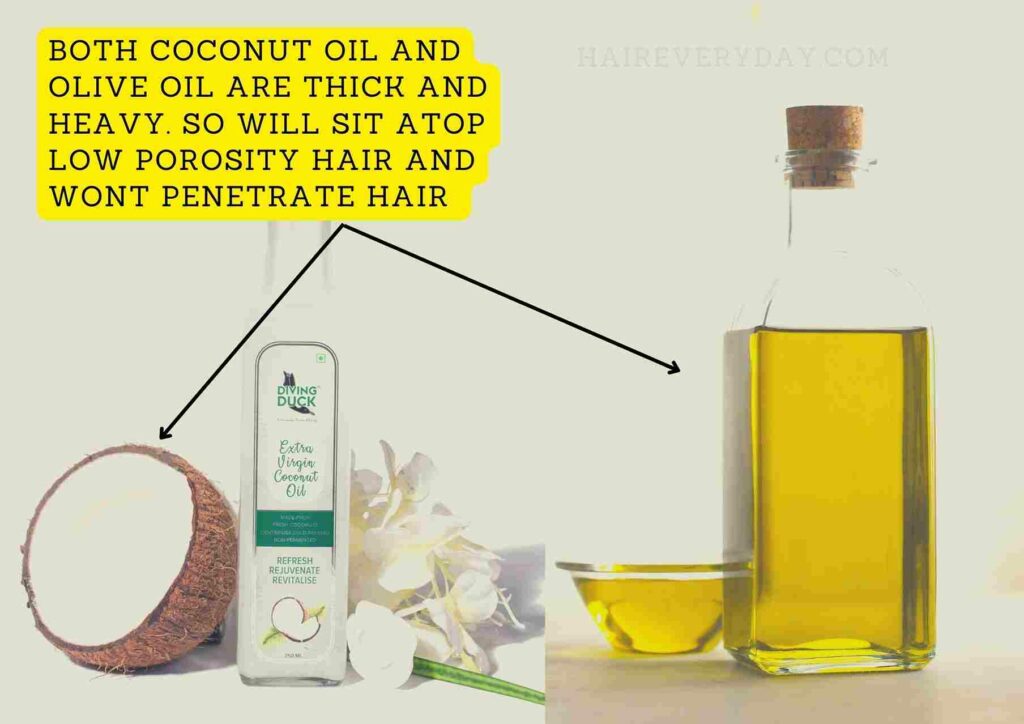
Is Olive Oil Good For Low Porosity Hair
Olive oil is similar to coconut oil when it comes to low porosity hair. It is excellent for this hair type as it is a humectant (something that attracts moisture) so it helps hydrate low porosity hair.
It is also full of antioxidants like vitamin E and omega-3 fatty acids that are great for all hair types including low porosity ones.
However, just like with coconut oil it is too thick and viscous to fully penetrate the hair shaft and will sit atop hair.
So just like with coconut oil only use it with a thermal cap or if you’re applying heat in any other way to hair afterwards or skip it completely.
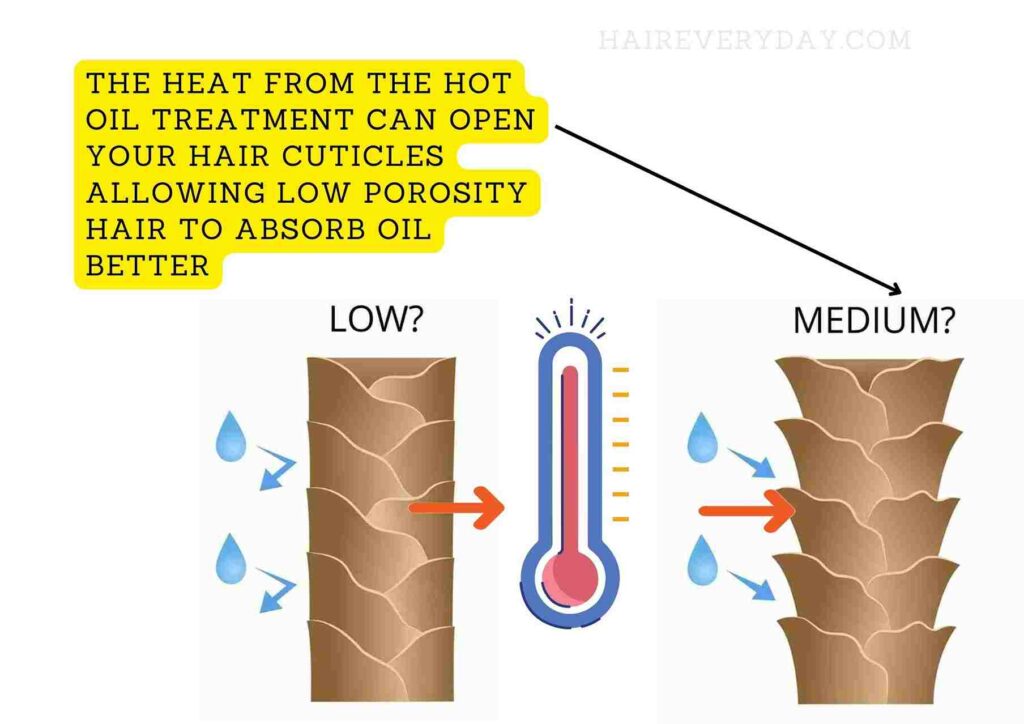
How To Do A Hot Oil Treatment At Home
You don’t need to go to a fancy salon to do a hot oil treatment at home for your low porosity hair. Following these steps is more than enough:
Step 1: Choose the right oil for your hair: You firstly need to select the right oil for your hair. I suggest going for lightweight oils that are easily absorbed like grapeseed oil, argan oil, jojoba oil, monoi oil, pomegranate seed oil and avocado oil. You can also mix in one or more of these nutrient rich oils for best results.
Step 2: Mix in your favorite essential oils: This is not a mandatory step, it’s just something I prefer doing to add more value to the hot oil treatment. I basically add in a few drops of essential oils to add fragrance and to reduce any hair ailments that I might have. For example, tea tree oil is great for dandruff and scalp inflammation while rosemary oil is great for hair growth.
Step 3: Warm it up: This is where it gets tricky. Heating up oils to a high temperature might destroy all the vitamins and minerals in the oil. It can also hurt your scalp if you put scalding hot oil on top of it. So make sure you use a water bath or wax warmer to heat the oil and keep the temperature low.
Step 4: Apply it to hair: Most people think they’ve got the oil application process figured out, I mean how hard can it really be? But unfortunately, this isn’t true. You need to focus on your scalp while applying oil and not the ends and use your finger pads and not nails to massage it in. Also be careful of using too much oil as it won’t help but rather make your hair greasy.
Step 5: Deep condition if needed: As I’ve described in the article above, heat can really up your hair cuticles, allowing low porosity hair to absorb oil better. So why not turn it up a bit. You can dip a towel in hot water and wrap it around your head after applying oil or put on an electric thermal cap for hair. Keep it on for 15-20 minutes to allow better penetration of the oil.
Step 6: Wash and rinse: I wouldn’t suggest leaving oils on hair overnight as it can pores on skin if it drips down and also because oil attracts dirt and might make hair greasier. So keep the oil for 2-3 hours at the most before washing it off with lukewarm water and a mild sulfate-free shampoo. Don’t forget to condition your hair ends afterwards.
Summary on Oil Treatments and Low Porosity Hair
Hot oil treatments are not only good they are excellent for low porosity hair. These hair types do not absorb (or let out) any sort of moisture as they are very impermeable. This can be due to a lot of buildup or naturally because of the way cuticles are arranged.
The heat from the hot oil treatments can help open up the cuticles and allow the penetration of these oils better.
However, I would also suggest using lightweight oils like argan or jojoba oils to increase the effect.
Also Read:
Does Bleaching Hair Increase Porosity
Does High Porosity Hair Need Protein
Can I Use Shea Butter For High Porosity Hair
Is Shea Moisture Coconut And Hibiscus Good For Low Porosity Hair
Can High Porosity Hair Be Protein Sensitive
To Summarize

